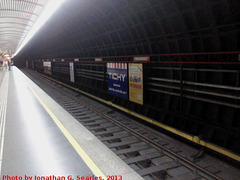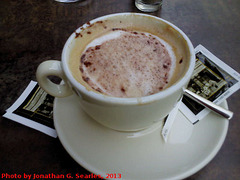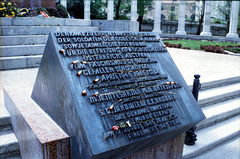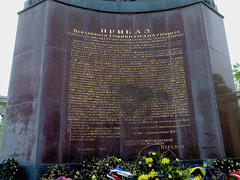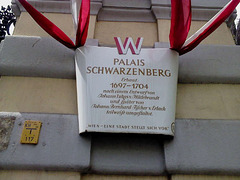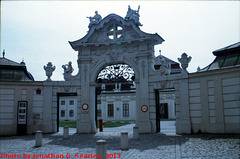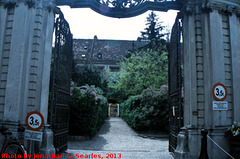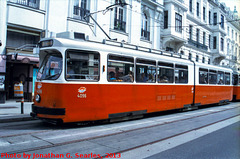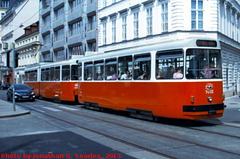
Wien (Vienna)
I first visited Vienna, the capital of Austria, in 2013, and will probably visit it again. These are the photos from my travels there.
Wien Hauptbahnhof, Wien (Vienna), Austria, 2013
| |
|
I actually didn't arrive in Hauptbahnof, as the Eurocity trains from Prague arrive at Meidling, but because it was late at night, and international train travel is increasingly losing its novelty for me, I forgot to take a picture. In addition, it was dark, so by the time I got to Hauptbahnhof I had to use my cameraphone.
Wien Hauptbahnhof U-Bahn, Wien (Vienna), Austria,…
| |
|
Vienna is actually a city of over 1.7 million people, so it is large enough to support a subway, or untergrundbahn. The Vienna untergrundbahn is unimaginatively called the U-Bahn. This is the Hauptbahnhof station. All of the current U-Bahn lines were constructed in 1976, except for lines U4 and U6, which were built in 1898. This is line U1, with this part of the station being opened in 1978, so it's a little bit surprising how dark and dank it looks. It's perfectly functional, though, and not vandalized nor abnormally dirty.
Wien Hauptbahhof U-Bahn, Picture 2, Wien (Vienna),…
| |
|
Here's one of the U-Bahn trains arriving. My cameraphone can't take action shots in the dark very well, though, so it blurred beyond recognition.
Daniel Moser Coffee, Picture 2, Wien (Vienna), 201…
| |
|
This was a very good cup of Daniel Moser coffee that I had the next morning at Stadt Boden, a coffeehouse in the city centre of Wien.
Stadt Boden Breakfast, Wien (Vienna), 2013
| |
|
This was my breakfast of eggs and beans (more British than Austrian), which was better than it sounds.
Dual Power Buses, Wien (Vienna), 2013
| |
|
The Vienna transit authority (which I don't know much about) operates a fleet of trolleybuses that can operate on diesel power when they leave electrified areas. The raise or lower the pantograph when they're at a stop, just as they do in Marianske Lazne. I don't know anything about the manufacturer of the buses.
Osterreichische Werkstatten, Wien (Vienna), 2013
| |
|
This name would make you think this place promotes Austrian industry, but actually they sell artwork.
Wien (Vienna), Picture 5, Edited Version, Austria,…
| |
|
The reason this photo lacks more information is....I don't have any! I think the building is a hotel, but I don't even know that. I decided to post the photo because it is, nevertheless, an attractive building.
(French Embassy) Wien (Vienna), Picture 8, Edited…
| |
|
This is a numbered street shot from my Wien collection, but I should add that this is the French Embassy. This complex is much bigger than it looks in this photo, which is surprising, in fact, when you consider the fact that France isn't the empire it used to be. The dome in the background reminds me a lot of some of the buildings in Prague, especially St. Nicholas Church in Staromestske Namesti (not the one in Malostranske Namesti).
Soviet World War II Memorial, Edited Version, Wien…
| |
|
In the West, the Soviet Union's role in World War II is downplayed. Britain is said to have "stood alone," which is only part true. Britain was alone on the Western Front, but the Soviet Union inflicted the vast majority of Axis casualties in Europe, and took the vast majority of Allied casualties. Some of this ignorance is a result of Cold War propaganda, but to be fair a lot of people don't like to view Stalin as any kind of hero. Interestingly, I didn't find Stalin mentioned on this memorial, and obviously it's the better for it. Austria attempted to remain neutral during the Cold War, so it's understandable why they allowed this memorial in their capital, regardless of the Soviet contribution in the war. Still, I had never heard of it and was surprised to see it.
Soviet World War II Memorial, Picture 4, Edited Ve…
Soviet World War II Memorial, Picture 6, Edited Ve…
| |
|
|
|
This column is the centerpiece of the monument, and has the names of dead Allied soldiers on the base. Presumably, these were only those killed in Austria.
Soviet World War II Memorial, Picture 10, Wien (Vi…
| |
|
This is a list of the Allied casualties killed in Austria during the war. It isn't clear whether it includes only Soviet troops or all allied troops.
Palais Schwartzenberg Plaque, Wien (Vienna), Austr…
| |
|
This is the historical marker for the Schwartzenberg Palace, built by the Schwartenberg family (if I'm not mistaken) between 1697-1704. The Schwartzenbergs are Austrian, but the Czech MP, Karel Schwartzenberg, is one of them. This isn't so surprising given the historical connection of the Hapsburg Monarchy, which ruled Bohemia, to a greater or lesser degree, from 1526 to 1918.
Palais Schwarztenberg, Edited Version, Wien (Vienn…
| |
|
This is the portal to one of the entrances to the palace. The Baroque style is evident, in line with its era.
Palais Schwartzenberg, Picture 2, Edited Version,…
| |
|
This is another entrance to the palace. I liked the path through the garden, although I didn't enter as it's private property (although tours are done, if I'm not mistaken).
Tram #4096, Edited Version, Wien (Vienna), Austria…
| |
|
In addition to dual-power trolleybuses, Wien also has traditional trams, credited with giving Einstein his ideas on the relativity of time at the speed of light, above it, and below it. These trams are of newer heritage, as you can see from the bogies (trams of Einstein's era were almost always four-wheel and non-bogey), but I know little else about them. Additional information would be welcome, although I may follow up with more research as it is.
Tram #1480, Edited Crop, Wien (Vienna), Austria, 2…
| |
|
The rear carriages on some of these trams appear to be unpowered, with the lead unit being articulated, resulting in a total of 10 axles. This system was experimented with in Prague, at least with pairs of T3's (which are non-articulated) pulling unpowered coaches based on them, but ultimately the unpowered trams weren't retained.
Jump to top
RSS feed- Latest items - Subscribe to the latest items added to this album
- ipernity © 2007-2024
- Help & Contact
|
Club news
|
About ipernity
|
History |
ipernity Club & Prices |
Guide of good conduct
Donate | Group guidelines | Privacy policy | Terms of use | Statutes | In memoria -
Facebook
Twitter


